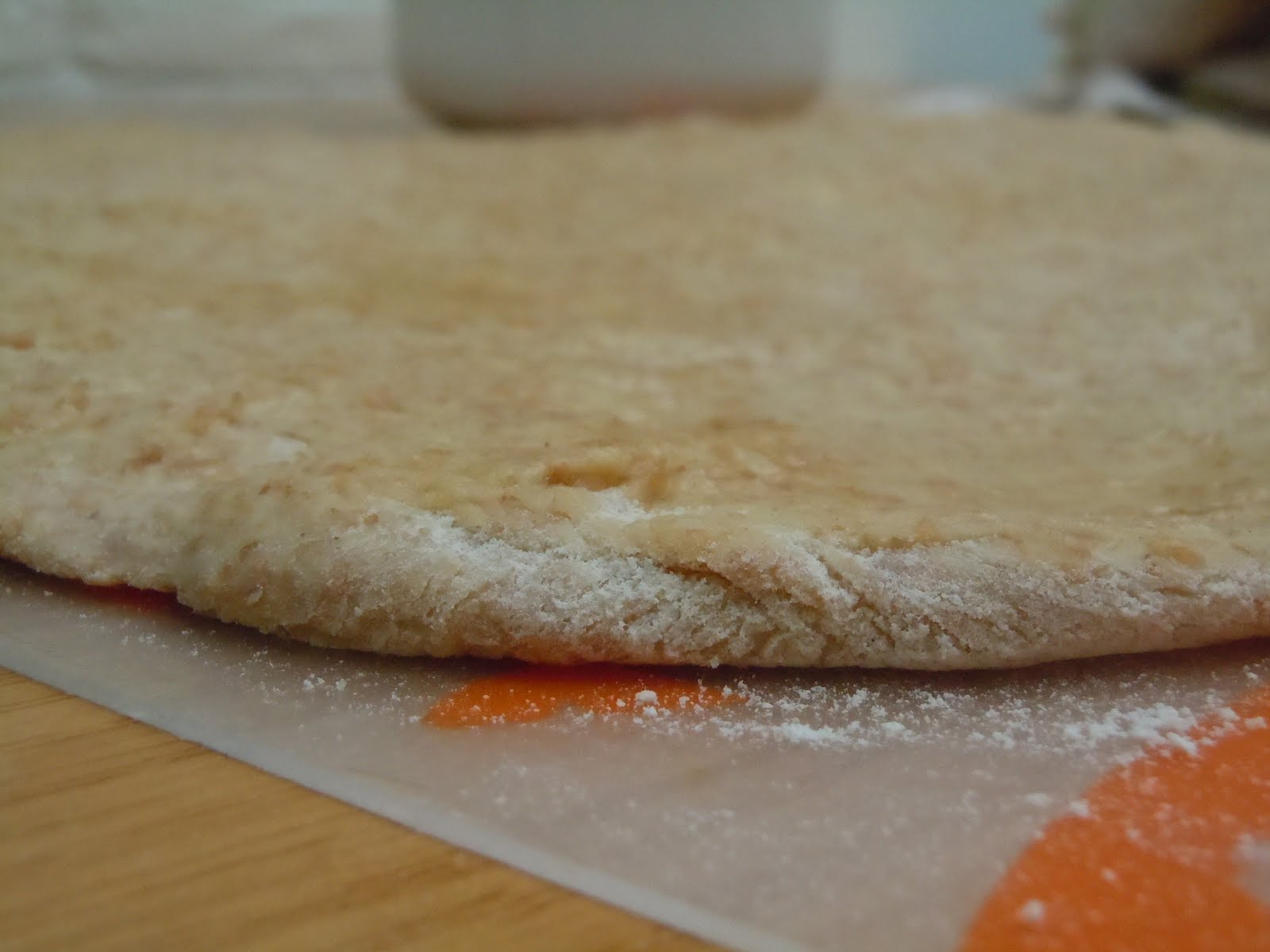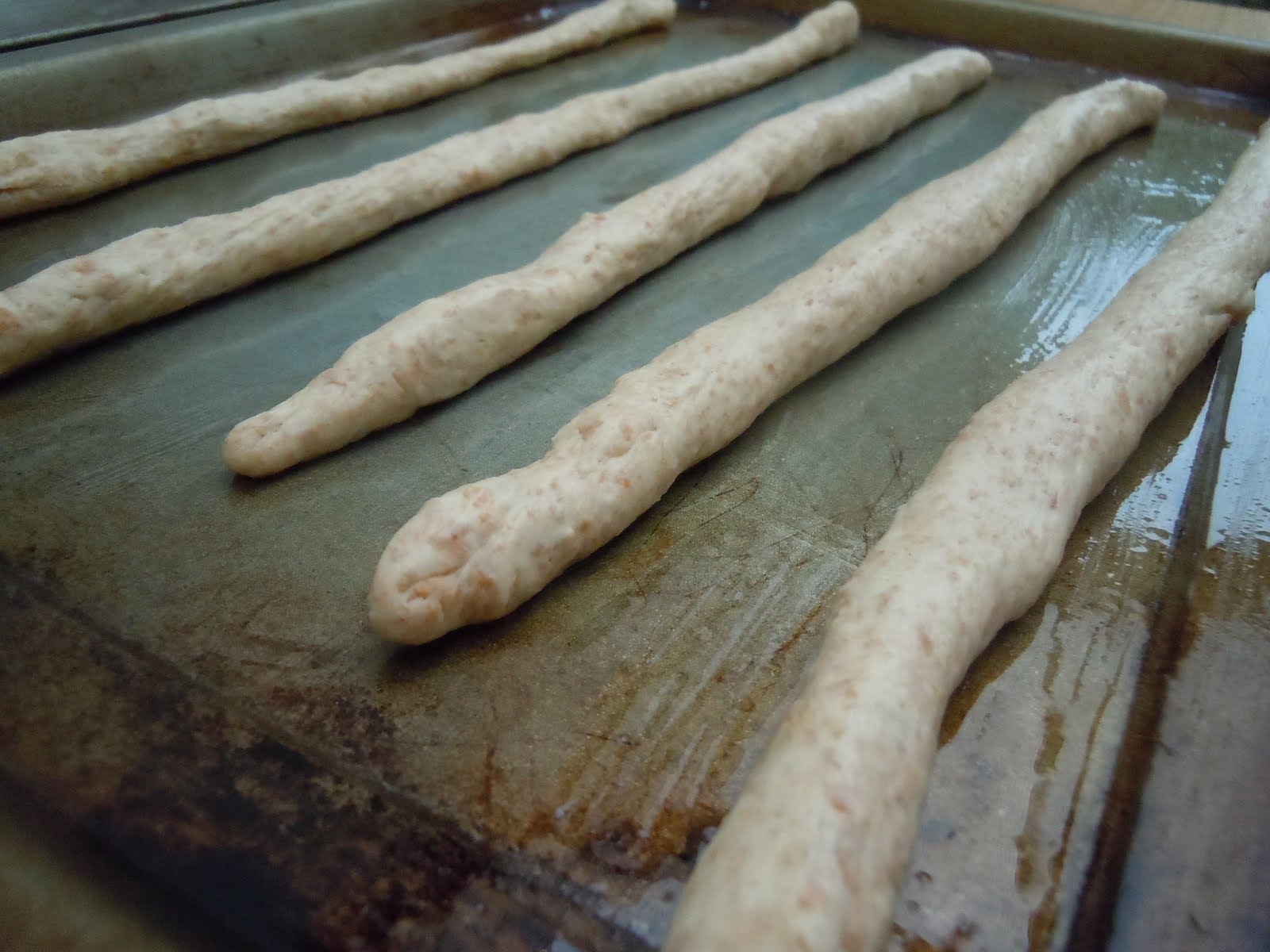I can't help it. I love bread. I mean, I really love it. Save your pastry. Save your cakes. Give me a fresh-baked loaf of good ol' white bread any day and I'll be as happy as a clam. Of course, in this Atkins "evils of carbohydrates" world in which we now live, my obsession is a sinful one. And while I usually take such doom and gloom of yeast and flour with a pinch of salt (ok, more than a pinch), I do find it hard to get up the gumption to make bread for myself very often.
Why?
Because it takes forever.
Literally. Forever.
In my perfect world, I would own a bread machine, crank it up at night, fall asleep, and awake to my very own loaf of bread, baked for me by the little elves of machinery.
Alas. This is not currently the case.
So when its raining cats and dogs outside and I find myself with very little else to do (or rather little else I want to be doing, such are the joys of procrastination), bread-making seems a good activity.
And, taking that into consideration with the above nutritional scare tactics about the evils of white bread, I took the latest NY Times "Recipes for Health" column and decided to try the joys (?) of whole wheat breadsticks.
To be honest, aside from the kneading (which I hate and loathe with the passion of a thousand suns), these were surprisingly easy to make. If you make sure you put the dough in the right area to rise (which, in my case, is a turned off oven with a bowl of hot water underneath it), then you're sure to have delicious breadsticks within a few hours. And on the time scale of bread-making, that's positively instant.
Ingredients
2 teaspoons active dry yeast
1 1/2 cup lukewarm water
1 teaspoon honey
1/4 cup extra virgin olive oil
2 cups whole-wheat flour
About 1 1/3 cups unbleached all-purpose flour
1 1/2 teaspoons salt
 |
| The rolled-out dough, just before being left to rise. |
Method
Dissolve the yeast in the water in a large bowl or in the bowl of a stand mixer. Stir in the honey. Let stand for five minutes. Stir in the olive oil.
Combine the whole-wheat flour, the unbleached all-purpose flour, and the salt. Add to the liquid mixture. If kneading by hand, stir until you can turn the dough out onto a lightly floured surface; knead for 10 minutes, adding flour as necessary to keep the dough from sticking to your hands and worktop (I needed to add probably another cup of flour for this bit. Be liberal).
If using an electric mixer, mix at medium speed for 8 to 10 minutes. Add flour as necessary so that the dough comes away from the sides of the bowl. The dough should be elastic and just slightly sticky.
 |
| The dough, just before baking |
Lightly flour your work surface or brush with olive oil. Using your hands or a rolling pin, roll the dough into a 14-by4-inch rectangle. Make sure there is enough flour or oil underneath the dough that it doesn’t stick to the work surface. Brush the top with oil. Cover with plastic wrap, then with a damp kitchen towel. Allow to rise for 1 to 1 1/2 hours until nearly doubled. (Being England, I had no good place to let the dough rise. If you share my fate, turn on the oven on its lowest heat setting for a few minutes, then turn it off. Put a bowl of just boiled water on the bottom of the oven and then the dough above that. This will give a good damp atmosphere that should encourage your dough to rise.)
Preheat the oven to 400 degrees with the racks positioned in the middle and upper thirds. Brush sheet pans with olive oil. Cut the dough crosswise into four equal pieces. One at a time, cut each piece crosswise into six equal pieces. Roll each piece between the board and your hands, as if you were making it into a rope, until it is as long as the baking sheet. For a tighter strip, twist the strands from one end to the other. Place 1 inch apart on the baking sheets until you’ve filled two baking sheets. Continue to shape the remaining breadsticks while the first batch is baking.
Place in the oven, and bake 15 minutes. Switch the pans top to bottom and front to back, and bake another 10 minutes until the breadsticks are nicely browned (they will be darker on the bottom). Remove from the heat, and cool on a rack. Shape and bake any remaining dough as instructed.


